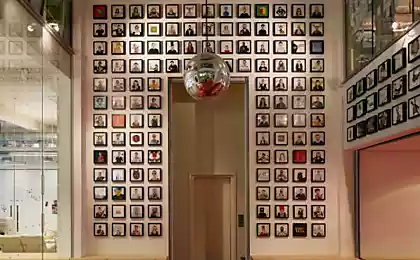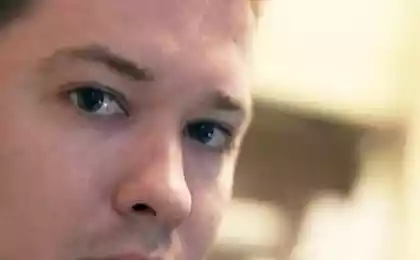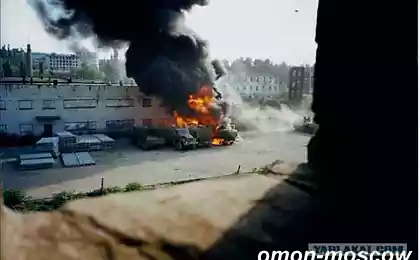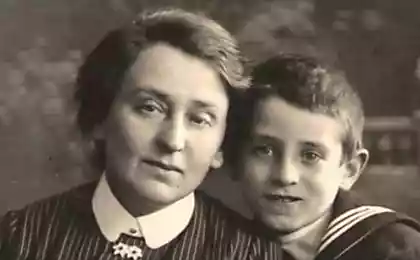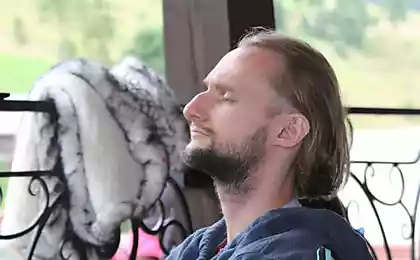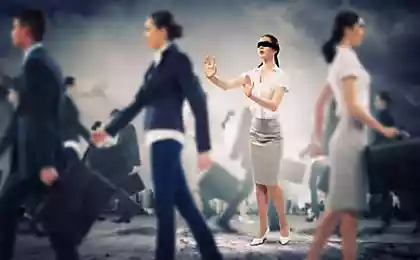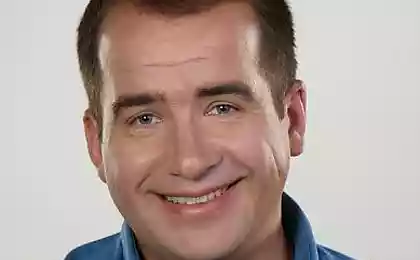510
"I don't like the word "futurist": how to create innovation in the here and now
Large institutions with bureaucracy, presentations in PowerPoint, planning and even prototyping are now not needed. Joy ito, Director MIT Media Lab, in a lecture at TED spoke about a new approach to creating innovation at the example of the project Safecast, which arose after the accident at Japanese nuclear power plant "Fukushima-1" because of the earthquake and tsunami in 2011. Published the main ideas of the report.
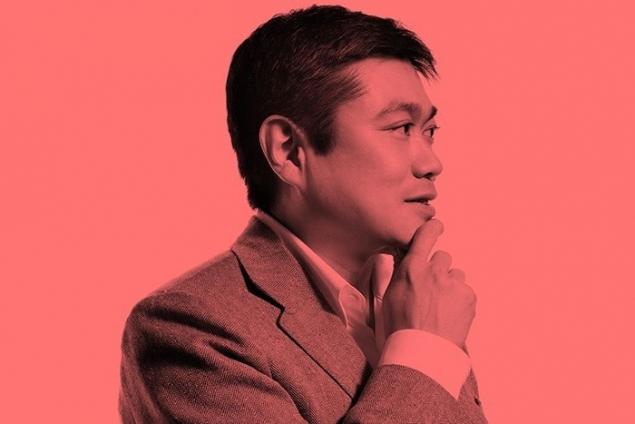
www.garage.co.jp
"10 Mar 2011 I was in Cambridge at the MIT Media Lab, where together with staff and students we have solved the question of my appointment as the Director. That night in Japan was an earthquake of magnitude 9 points. My wife together with family was then in Japan, and the emergence of news I would panic. I was looking through the tape of the sites, watched the press conference with members of the government and Tokyo electric power company, heard about the explosion in the nuclear reactor and the radioactive cloud that was moving in the direction of our house, located 200 kilometers from the scene of the accident. People on TV didn't say anything that I wanted to hear, namely, what happens to the reactor, with radiation and in danger my family.
Instead make a small website like the guys from Palo Alto, in Shenzhen released mobile phones
I did what instinctively felt right: I went to the Internet and tried to understand if I could take matters into their own hands. I met a lot of people, who like me was trying to figure out what's going on. We formed a group called Safecast and decided that we will try to measure the radiation level and to give this information to anyone, because it was clear that the government is going to do. Three years later, we have 16 million data points, we have developed a Geiger counter design that you can download, build, and connect to the network. We have an application that displays the places with the highest concentration of radiation in Japan and other parts of the world. Now we may be one of the most successful citizen science projects in the world, we have created the largest open source of information on indicators of radioactivity.
The main question is how a group of Amateurs that had no idea what I was doing, got together and created the government to create not. I think it is connected with the Internet, and it is no Fluke. The incident brought us together, but it was a completely new way of interaction, the principles of which I'm going to tell you.
In the pre-Internet era, life was simple: everything was Euclidean, nuconomy and quite predictable. Many people, even economists, have tried to predict the future. With the advent of the Internet the world has become much more difficult, cheaper, faster, and the laws of Newton, whom we cherished so much become "local". We found that most teams and projects that have survived in this complex unpredictable world, was guided by somewhat different principles.
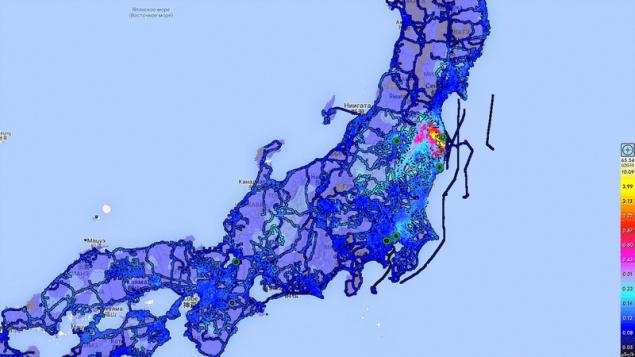
safecast.org/tilemap
To create a service to the Internet first you'd need to construct the apparatus, to configure the network and so the development of something of significant worth millions of dollars. Needed someone with an MBA, who wrote the plan and raised money from investors or big corporations, and after hired designers and engineers. It is a model of innovation before the Internet. But now the cost of innovation has fallen almost to zero, and all because of Moore's law and a significant reduction in the cost of joint work, distribution, communication. So we have Google, Facebook, Yahoo, students that didn't have permission to innovate and PowerPoint. They have created something, then found the money, wrote something like a business plan and maybe later hired someone with an MBA. Innovation, placed in the hands of engineers and designers went to the Dorm and start-UPS, away from the huge bulky old institutions and institutions with power, money and authority. These changes affected other areas.
As well said Nicholas Negroponte: "Demo or die," in contrast to the traditional academic "publish or be gone". He also said that the demo-the sample should work only once, because usually we affect the world through a huge company that, inspired by us, created products such as the Kindle or Lego Mindstorms. But with today's possibilities to produce something so cheap, so I'm officially changing the slogan to "deploy or die." Release product in the world to play a role. Now we need to do it yourself, not depending on large institutions.
What previously required a factory full of people who work with their hands, is now in a box in new York
Last year we sent a group of students in Shenzhen, where local innovators showed them their factory shop. There was a different production device, and they do not create prototypes or presentations in PowerPoint e, and tinkered with this equipment, updating it on the spot. The plant literally was a developer, and the developer was directly at the factory. Suitable for kiosks, mobile phones. That is, instead of having to make a small website like the guys from Palo Alto, in Shenzhen produce mobile phones. That is how those sites are doing, these produce new phones. Now in this industry is a forest of the latest developments. They introduce them, then back down to look, sold any of the kiosks, the product of the other teams, we rise again, produce a couple thousand and come down again. This occurs as well as development and improvement, a/B testing and iteration. The fact that we may only do with guys doing in the hardware.
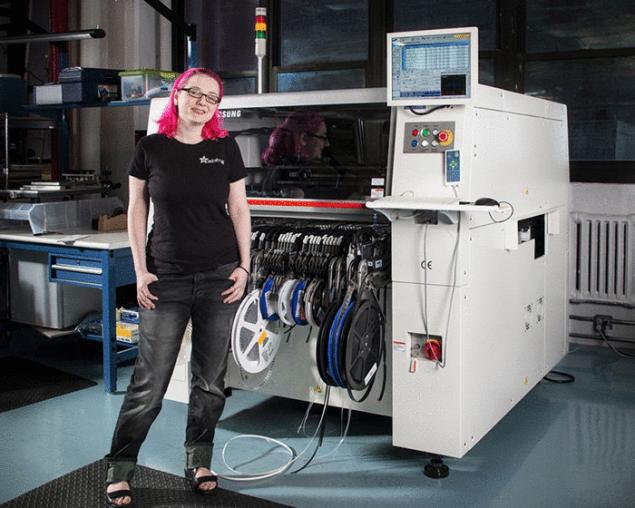
We're talking about 3D printers and stuff like that. It is all good, but look at the example Limor (Limor Fried — approx.ed), one of our favorite alumnae, which stands in front of Samsung Techwin Pick and Place. This thing puts on the motherboard 23 thousand parts per hour. This is a factory in a box. What previously required a factory full of people who work with their hands, is now in a box in new York. Or, for example, Sorona is a DuPont process, which involves a microbe created through genetic engineering, to turn corn sugar into polyester. This is 30% more efficient than fossil fuel and is much better for the environment. Genetic and bioengineering is the many opportunities for chemistry, computational processes in memory. We're probably going to do a lot of things related to health, but it is possible that soon we will also begin to grow chairs and buildings. The problem is, Sorona costs 400 million dollars for its creation took seven years. This is a reminder of a time the old mainframe. But the point is that the price of innovation in bioengineering industry is also reduced. Early genome sequencing cost millions, and now there is a desktop device that can be used by teenagers.
Innovation in the hands of engineers and developers is a fundamentally new way of thinking about new technologies. He turns the world upside down, it is democratic, chaotic, difficult to control. This is significantly different from what it was before, and I think that the traditional rules by which they lived institutions do not work, and most of us are guided by different sets of principles. One of my favorites is "gravity", his idea that all resources must be removed from system as needed and not store and monitor all of them.
In the history of Safecast about the earthquake I didn't know anything, but I found Sean, the organizer of a community of hackers, Peter, a developer of analogue equipment that created our first Geiger counter, and Dan, who built a system of monitoring the Three Mile island after the nuclear accident (1979, USA — approx.ed). I couldn't meet with all these people before, and maybe it's better that I found them at the right time in the network.
Education is what people do to you and learning what you're doing for yourself
Me three times out of College, so the question of the difference between learning and education is very dear and close to my heart. For me, education is what people do to you and learning what you're doing for yourself. May I take this biased, but I have a feeling that we are forced to memorize the entire encyclopedia before you go to play. My phone is Wikipedia, but they assume that you will be on the top of the mountain one with the two pencils where you try to figure out what to do. In fact, you are always, you have friends, you can open Wikipedia when needed. Just need to learn how to learn. In the case of the Safecast three years ago we were a group of beginners, and today, I am convinced that we as a Union know more than other organizations on how to collect, publish data, and how to engage in civil science (citizen science).
The idea of "Compass or map" is to make a plan or draw a map is very expensive, but not particularly useful. At Safecast we knew that we need to collect data that we then want to publish, and instead draw a plan, we decided that first you need to buy Geiger counters. Oh, it's over, then let's do them. We don't have enough sensors, then we will make it mobile: we can go to find volunteers. We don't have enough money, let's put them on Kickstarter'E. We didn't plan all of these actions, but we had a clear direction, and in the end we got there and where I was going. This is very similar to the methodology of agile software development.
So this idea of a compass is very important and I think the good news is that even in our very complex world to make anything you need very easily. I'm questioning these rules that you need to plan everything, to keep everything that you need to be prepared. Stay connected, always learning, do it consciously and feel the moment. I don't like the word "futurist." I think we need to act here and now."
P. S. And remember, just changing your mind — together we change the world! ©
Source: theoryandpractice.ru

www.garage.co.jp
"10 Mar 2011 I was in Cambridge at the MIT Media Lab, where together with staff and students we have solved the question of my appointment as the Director. That night in Japan was an earthquake of magnitude 9 points. My wife together with family was then in Japan, and the emergence of news I would panic. I was looking through the tape of the sites, watched the press conference with members of the government and Tokyo electric power company, heard about the explosion in the nuclear reactor and the radioactive cloud that was moving in the direction of our house, located 200 kilometers from the scene of the accident. People on TV didn't say anything that I wanted to hear, namely, what happens to the reactor, with radiation and in danger my family.
Instead make a small website like the guys from Palo Alto, in Shenzhen released mobile phones
I did what instinctively felt right: I went to the Internet and tried to understand if I could take matters into their own hands. I met a lot of people, who like me was trying to figure out what's going on. We formed a group called Safecast and decided that we will try to measure the radiation level and to give this information to anyone, because it was clear that the government is going to do. Three years later, we have 16 million data points, we have developed a Geiger counter design that you can download, build, and connect to the network. We have an application that displays the places with the highest concentration of radiation in Japan and other parts of the world. Now we may be one of the most successful citizen science projects in the world, we have created the largest open source of information on indicators of radioactivity.
The main question is how a group of Amateurs that had no idea what I was doing, got together and created the government to create not. I think it is connected with the Internet, and it is no Fluke. The incident brought us together, but it was a completely new way of interaction, the principles of which I'm going to tell you.
In the pre-Internet era, life was simple: everything was Euclidean, nuconomy and quite predictable. Many people, even economists, have tried to predict the future. With the advent of the Internet the world has become much more difficult, cheaper, faster, and the laws of Newton, whom we cherished so much become "local". We found that most teams and projects that have survived in this complex unpredictable world, was guided by somewhat different principles.

safecast.org/tilemap
To create a service to the Internet first you'd need to construct the apparatus, to configure the network and so the development of something of significant worth millions of dollars. Needed someone with an MBA, who wrote the plan and raised money from investors or big corporations, and after hired designers and engineers. It is a model of innovation before the Internet. But now the cost of innovation has fallen almost to zero, and all because of Moore's law and a significant reduction in the cost of joint work, distribution, communication. So we have Google, Facebook, Yahoo, students that didn't have permission to innovate and PowerPoint. They have created something, then found the money, wrote something like a business plan and maybe later hired someone with an MBA. Innovation, placed in the hands of engineers and designers went to the Dorm and start-UPS, away from the huge bulky old institutions and institutions with power, money and authority. These changes affected other areas.
As well said Nicholas Negroponte: "Demo or die," in contrast to the traditional academic "publish or be gone". He also said that the demo-the sample should work only once, because usually we affect the world through a huge company that, inspired by us, created products such as the Kindle or Lego Mindstorms. But with today's possibilities to produce something so cheap, so I'm officially changing the slogan to "deploy or die." Release product in the world to play a role. Now we need to do it yourself, not depending on large institutions.
What previously required a factory full of people who work with their hands, is now in a box in new York
Last year we sent a group of students in Shenzhen, where local innovators showed them their factory shop. There was a different production device, and they do not create prototypes or presentations in PowerPoint e, and tinkered with this equipment, updating it on the spot. The plant literally was a developer, and the developer was directly at the factory. Suitable for kiosks, mobile phones. That is, instead of having to make a small website like the guys from Palo Alto, in Shenzhen produce mobile phones. That is how those sites are doing, these produce new phones. Now in this industry is a forest of the latest developments. They introduce them, then back down to look, sold any of the kiosks, the product of the other teams, we rise again, produce a couple thousand and come down again. This occurs as well as development and improvement, a/B testing and iteration. The fact that we may only do with guys doing in the hardware.

We're talking about 3D printers and stuff like that. It is all good, but look at the example Limor (Limor Fried — approx.ed), one of our favorite alumnae, which stands in front of Samsung Techwin Pick and Place. This thing puts on the motherboard 23 thousand parts per hour. This is a factory in a box. What previously required a factory full of people who work with their hands, is now in a box in new York. Or, for example, Sorona is a DuPont process, which involves a microbe created through genetic engineering, to turn corn sugar into polyester. This is 30% more efficient than fossil fuel and is much better for the environment. Genetic and bioengineering is the many opportunities for chemistry, computational processes in memory. We're probably going to do a lot of things related to health, but it is possible that soon we will also begin to grow chairs and buildings. The problem is, Sorona costs 400 million dollars for its creation took seven years. This is a reminder of a time the old mainframe. But the point is that the price of innovation in bioengineering industry is also reduced. Early genome sequencing cost millions, and now there is a desktop device that can be used by teenagers.
Innovation in the hands of engineers and developers is a fundamentally new way of thinking about new technologies. He turns the world upside down, it is democratic, chaotic, difficult to control. This is significantly different from what it was before, and I think that the traditional rules by which they lived institutions do not work, and most of us are guided by different sets of principles. One of my favorites is "gravity", his idea that all resources must be removed from system as needed and not store and monitor all of them.
In the history of Safecast about the earthquake I didn't know anything, but I found Sean, the organizer of a community of hackers, Peter, a developer of analogue equipment that created our first Geiger counter, and Dan, who built a system of monitoring the Three Mile island after the nuclear accident (1979, USA — approx.ed). I couldn't meet with all these people before, and maybe it's better that I found them at the right time in the network.
Education is what people do to you and learning what you're doing for yourself
Me three times out of College, so the question of the difference between learning and education is very dear and close to my heart. For me, education is what people do to you and learning what you're doing for yourself. May I take this biased, but I have a feeling that we are forced to memorize the entire encyclopedia before you go to play. My phone is Wikipedia, but they assume that you will be on the top of the mountain one with the two pencils where you try to figure out what to do. In fact, you are always, you have friends, you can open Wikipedia when needed. Just need to learn how to learn. In the case of the Safecast three years ago we were a group of beginners, and today, I am convinced that we as a Union know more than other organizations on how to collect, publish data, and how to engage in civil science (citizen science).
The idea of "Compass or map" is to make a plan or draw a map is very expensive, but not particularly useful. At Safecast we knew that we need to collect data that we then want to publish, and instead draw a plan, we decided that first you need to buy Geiger counters. Oh, it's over, then let's do them. We don't have enough sensors, then we will make it mobile: we can go to find volunteers. We don't have enough money, let's put them on Kickstarter'E. We didn't plan all of these actions, but we had a clear direction, and in the end we got there and where I was going. This is very similar to the methodology of agile software development.
So this idea of a compass is very important and I think the good news is that even in our very complex world to make anything you need very easily. I'm questioning these rules that you need to plan everything, to keep everything that you need to be prepared. Stay connected, always learning, do it consciously and feel the moment. I don't like the word "futurist." I think we need to act here and now."
P. S. And remember, just changing your mind — together we change the world! ©
Source: theoryandpractice.ru
New nanogenerator collects energy from car wheels while driving
"Wi-Power" remote charges any devices that are in range of the system



